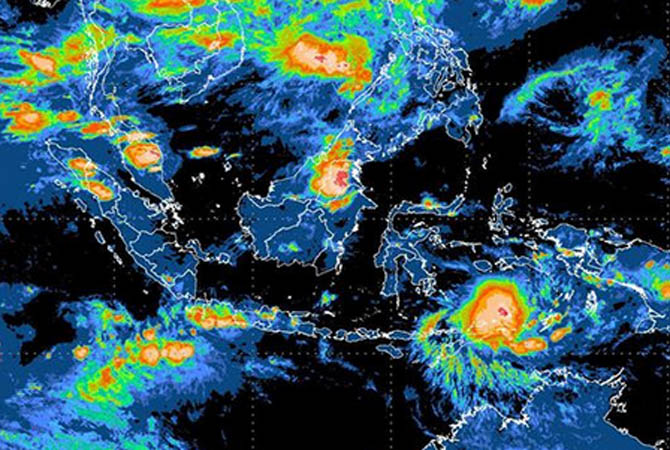Papua New Guinea (PNG) is a country with many tropical rainforests, which are abundant on the island of New Britain. PNG is prone to various natural disasters, such as hurricanes, floods and drought. Some of these are expected to increase in frequency, magnitude and intensity due to climate change. The indicator used to predict climate change is soil surface temperature.
According to the results of other studies, high soil surface temperatures have been found in the Morobe Province of Papua New Guinea Island. Other researchers stated that the land surface temperature on the island of Papua New Guinea in 2007 was more stable than in Indonesia and Thailand, while in Australia, the land surface temperature changes in a short time. One of the causes of significant land surface temperature changes is the rapid transformation of land use and land cover patterns as a result of rapid urban growth.
This study uses secondary data from NASA on the MODIS (Moderate Resolution Imaging Spectroradiometer) website. This research focuses on the land surface temperature of the island of New Britain from 2000 to 2019.
Soil surface temperature is a variable that can indicate climate change because it can affect the Earth’s ecosystems such as glaciers, ice sheets and vegetation. Climate change is a change in climate patterns over a long period and may be caused by a combination of natural and human causes. Changes in soil surface temperature occur slowly over a while because many aspects also change environmental conditions or ecosystems. Temperature variations were observed in nine sub-regions on the island of New Britain during the period 2000 to 2019, to determine changes in temperature in each sub-region. Ground Surface Temperature observations were carried out every eight days during the period 2000 to 2019 via the MODIS Terra satellite. This study deals with soil surface temperature using spatial and temporal correlation data analysis. The seasonal pattern of temperature at soil surface temperature was analyzed using a cubic spline.
Soil surface temperatures increased from 2000 to 2019 and one area on New Britain Island underwent an LST change with a Z value of 7.97. The highest growth in soil surface temperature was in sub-region 9 with an average value of increase/decade of 0.56 ℃ and p-value of 0.003, while the lowest growth in soil surface temperature was in sub-region 2 with an average value of increase/decade of 0.118 ℃ and p-value 0.433. Sub-region 9 lies west of the Province of New Britain. Changes in soil surface temperature to become warmer are associated with increased concentrations of greenhouse gases and deforestation. It can be seen from the road construction planning that has taken place in eastern and western New Britain, which has caused lowland forests to be in critical condition.
The increase in land surface temperature on the island can be an indicator of climate change because it is part of frequent weather changes. Changes in land surface temperature are influenced by urbanization, land use and changes in land cover (such as forest degradation and deforestation). The island of New Britain has a sizable amount of rainforest but had the highest proportion of deforestation and logging from 2002 to 2014. The locations of deforestation are mostly located near sub-regions 5 and 7.
More human activities without protecting the environment can lead to global warming, mainly due to reduced rainforest or green open space. Global warming can occur on the island of New Britain due to increased land surface temperatures. Besides, the increase in soil surface temperature can be used as an indicator of island warming (heat island). Heat islands can have an impact on heat waves that affect the quality of life and the environment. Soil surface temperature is one of the climate variables that can be an indicator of drought.
In another study related to drought in Papua New Guinea by looking at soil surface temperature and the Normalized Difference Vegetation Index (NDVI), it is known that there are also risk zones, especially in the Western Highlands province. Based on the study, the soil surface temperature indicates the dryness of the radiation level. When radiation is high, there is little water content at the ground surface. Drought occurs when temperatures are too hot, causing water in the soil to evaporate. It can induce hunger and death because water is the source of life for living things, and the community does not have sufficient food supplies because agriculture experiences crop failure.
The island of New Britain has a lot of tropical rainforests but also experiences a lot of logging and deforestation. This problem has an impact on climate change which can create natural disasters such as drought. New Britain Island consists of one region with nine sub-regions for ground temperature observations. In 8 of the nine sub-regions, soil surface temperatures have increased. The highest change in land surface temperature occurred in sub-region 9, with an average of 0.56 ℃.
Author: Tofan Agung Eka Prasetya
Link:
http://jurnal.lapan.go.id/index.php/ijreses/article/view/3342





